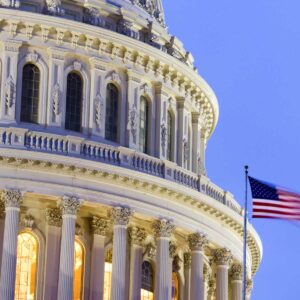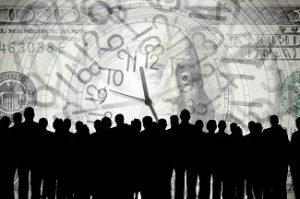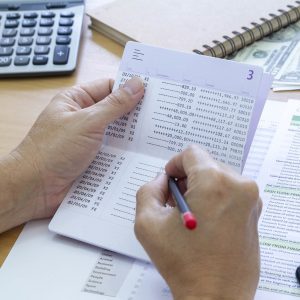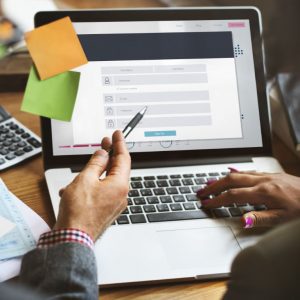 Two developments related to the Paycheck Protection Program (PPP) loan from the CARES Act have just been unveiled. One significant development from the IRS relates to the deduction of PPP loan expenses, and the other change comes from the Small Business Administration (SBA), related to “economic uncertainty.”
Two developments related to the Paycheck Protection Program (PPP) loan from the CARES Act have just been unveiled. One significant development from the IRS relates to the deduction of PPP loan expenses, and the other change comes from the Small Business Administration (SBA), related to “economic uncertainty.”
The PPP loan was an integral part of the CARES Act. It was designed to provide liquidity and capital to keep businesses afloat and workers employed as the impact of the pandemic spread. Congress intended for PPP borrowers to direct these loan funds primarily at retaining their workforce. Further enhancements from CARES included allowing loans to be forgiven if a borrower used the proceeds in a specified manner.
IRS Announces Further Details on Tax Treatment of PPP Expenses
One of the key features of the PPP loan is that the loan can be forgiven. Congress took this one step further and indicated that borrowers would not recognize taxable income of the forgiveness on their PPP loans. However, shortly after the CARES Act was adopted, the IRS issued Notice 2020-32 indicating that, since the debt relief was nontaxable to the borrower, the corresponding PPP expenses would not be deductible. This IRS guidance caught members of Congress by surprise, as well as many borrowers and advisors. Since the notice was released, there have been bi-partisan efforts in Congress to permit PPP expenses to be deductible.
This has not materialized into any legislation yet. Some Congressional leaders will seek legislation as they deal with various year-end bills. We will keep you informed as it progresses.
Questions to Consider
 Following the release of IRS Notice 2020-32, many borrowers and advisors wondered when the PPP expenses would be non-deductible. Would these expenses be disallowed in the year the expenses are incurred? Or would these be disallowed in the tax year that the borrower’s loan is forgiven by the SBA? The IRS did not spell this out in its initial guidance, but these questions came up as borrowers were looking at their 2020 tax situations. The impact could be significant to borrowers as the PPP loans, in many cases, were sizable amounts.
Following the release of IRS Notice 2020-32, many borrowers and advisors wondered when the PPP expenses would be non-deductible. Would these expenses be disallowed in the year the expenses are incurred? Or would these be disallowed in the tax year that the borrower’s loan is forgiven by the SBA? The IRS did not spell this out in its initial guidance, but these questions came up as borrowers were looking at their 2020 tax situations. The impact could be significant to borrowers as the PPP loans, in many cases, were sizable amounts.
The IRS had offered in informal discussions that the PPP expenses will be treated as non-deductible when incurred, if the borrower expected their PPP loan to eventually be forgiven. The IRS indicated this would be the case, even if loan forgiveness occurred in a subsequent tax year. With so many borrowers impacted and with sizable amounts involved, pressure mounted on the IRS to issue official guidance to help borrowers with their 2020 estimated tax payments and tax planning. On November 18, 2020, the IRS finally issued Revenue Ruling 2020-27 and Revenue Procedure 2020-51. This latest IRS guidance affirmed what was said informally: that PPP loan expenses would be non-deductible as the expenses were incurred, if it was foreseeable for the borrower to expect their loan to be forgiven.
Here are two scenarios, per Revenue Ruling 2020-27:
- Situation 1 Finding from Rev Rul 2020-27 – Based on the foregoing, when A completed its application for covered loan forgiveness, A knew the amount of its eligible expenses that qualified for reimbursement, in the form of covered loan forgiveness, and had a reasonable expectation of reimbursement. The reimbursement, in the form of covered loan forgiveness, was foreseeable. Therefore, pursuant to the foregoing authorities, A may not deduct A’s eligible expenses.
- Situation 2 Finding from Rev Rul 2020-27 – Although B did not complete an application for covered loan forgiveness in 2020, at the end of 2020, B satisfied all other requirements under section 1106 of the CARES Act for forgiveness of the covered loan; and at the end of 2020, expected to apply to the lender for covered loan forgiveness of the covered loan in 2021. Thus, at the end of 2020, B knew both the amount of its eligible expenses that qualified for reimbursement, in the form of covered loan forgiveness, and had a reasonable expectation of reimbursement. The reimbursement in the form of covered loan forgiveness was foreseeable. Therefore, pursuant to the foregoing authorities, B may not deduct B’s eligible expenses.
The only relief for borrowers would be if the PPP loan is not forgiven, then the borrower can seek to deduct these expenses. This is explained in Rev Proc 2020-51.
The IRS indicated earlier this year that the PPP expenses would not be deductible. The other shoe has now dropped on borrowers with this latest IRS guidance that indicated when these expenses are not deductible. Please contact your Sikich advisor for any assistance with handling the tax treatment of these expenses in 2020.
SBA Updates on “Economic Uncertainty”
The SBA continues to roll out guidance and information related to the PPP loan. The SBA’s latest release involves a new form for borrowers with more than $2,000,000 in PPP loans and has created quite a stir among borrowers, lenders and advisors.
Background
At the early stages of the PPP loan program, there were more questions than answers. Borrowers needed to represent that they faced “economic uncertainty” at the time of their PPP loan application, with no clear definition of the phrase. This term was not defined then by the SBA, as it was saddled with addressing issues, rules, procedures and more for the thousands of borrowers and lenders seeking advice.
 The SBA later offered some details and a “safe harbor” related to economic uncertainty. The SBA announced in May that borrowers with PPP loans of less than $2,000,000 would not need to document the economic uncertainty they faced at the time they took a loan. This was an arbitrary amount not spelled out in the CARES Act; however, the SBA felt it would reduce the administrative burden on borrowers, lenders, and the SBA in dealing with economic uncertainty details (in thousands of PPP loans, some of which were relatively small).
The SBA later offered some details and a “safe harbor” related to economic uncertainty. The SBA announced in May that borrowers with PPP loans of less than $2,000,000 would not need to document the economic uncertainty they faced at the time they took a loan. This was an arbitrary amount not spelled out in the CARES Act; however, the SBA felt it would reduce the administrative burden on borrowers, lenders, and the SBA in dealing with economic uncertainty details (in thousands of PPP loans, some of which were relatively small).
The SBA also announced that borrowers with $2,000,000 and above in PPP loans would need to provide support for the economic uncertainty. The SBA would then audit borrowers to assure they properly applied for their PPP loans and also properly applied for loan forgiveness.
Latest Developments – New SBA Forms
Borrowers with larger loans were left unsure of what the additional level of SBA review meant and when it might occur. The latest SBA forms indicate what the SBA might focus on with PPP borrowers with loans above $2,000,000:
The SBA announced on October 26, 2020 that it is seeking permission from the Office of Management and Budget (OMB) to prepare and issue a form for PPP loan borrowers with a loan amount of $2,000,000 or more. Shortly after this announcement, a draft of SBA Form 3509 (for-profit borrowers) and SBA Form 3510 (not-for-profit borrowers) appeared. These forms were not officially released by the SBA, but versions of these forms made their way to lenders, advisors, and even some borrowers. Please note that no instructions have been issued yet. The SBA has remained silent when asked about these draft versions, so it is uncertain when the SBA plans to formally unveil these forms and what changes may be made to them.
What These Latest Forms Provide
As noted, there are no instructions provided yet with Form 3509 and 3510. Here are some of the key features with the SBA forms:
- Financial Activity. Form 3509 asks for specific information related to the borrower’s financial results for the period after the PPP loan was received. For instance, it asks the borrower to compare their 2020 Q2 gross receipts with their 2019 Q2 gross receipts. These represent the period after most PPP borrowers applied for and received their loan funds.
- Financial Position. The form further asks for cash and cash equivalents of the borrower as of the quarter end before the PPP loan was applied for (March 31 in most cases). No information is requested about offsetting liabilities; rather, it is just the cash balance at one point in time.
- Distributions and Salaries. Form 3509 requests information about any distributions (excluding tax distributions) made by the borrower to their shareholders/owners. It also inquires about any debt pre-payments made on other loans (non-PPP loans). It further requests details on any salary of $250,000 paid to an employees of the borrower.
- Confidential information. The draft version of this form allows the borrower to specify if the answers or responses to any of the questions should be kept confidential. Many are wondering why this was included, as it was assumed all responses in this form were confidential.
- The SBA indicated that based on the responses to this form, additional information may be requested.
 Please note that the lender will notify the borrower that Form 3509/3510 needs to be filled out. Presumably, the SBA will direct the lender to send the form to the borrower. The borrower then has 10 days to complete Form 3509/3510; the lender then has five days to submit the form to the SBA.
Please note that the lender will notify the borrower that Form 3509/3510 needs to be filled out. Presumably, the SBA will direct the lender to send the form to the borrower. The borrower then has 10 days to complete Form 3509/3510; the lender then has five days to submit the form to the SBA.
Reaction to These Forms
Many were surprised by the specific details requested in Forms 3509 and 3510. Borrowers were blindsided, as there was no prior indication that the SBA would need this specific information. Industry groups, in which many of the members incurred PPP loans, were disappointed with the direction of these new forms, since the SBA is requesting financial information occurring after the PPP loan was made, not information relevant to the PPP loan at the time the loan was taken out. Many borrowers and industry groups will likely push back against these SBA forms once they are officially released. The AICPA, in fact, sent a letter on behalf of many groups to Congress hoping legislators would step in.
Borrowers with a PPP loan of $2,000,000 and above should be aware of these proposed forms, as if/when they receive notification from their PPP lender, they have only 10 days to reply. Borrowers may also want to contact legal counsel concerning the filing of this form, the information to include in it and responses to the various questions.
Please contact your Sikich advisor with any questions or for more information on Form 3509 or Form 3510.
About our authors

Jim Brandenburg
Jim Brandenburg, CPA, has extensive experience and knowledge in corporate and partnership tax law, mergers and acquisitions and tax legislation. His expertise includes working with owners of closely held businesses to identify tax planning opportunities and assist them in implementing these strategies.

Glen Birnbaum
Glen Birnbaum, CPA, ABV, ASA, CVA, CM&AA, is a partner with over 20 years of experience valuing closely held businesses. Glen provides expert accounting and tax advisory services for a range of entities, including those in the agriculture, manufacturing and construction industries. He excels in delivering tax and succession planning services to his clients, who value his commitment to strengthening their businesses.

Tom Bayer
Thomas E. Bayer, CPA, CExP, has more than 25 years of experience providing a broad range of accounting, tax, and business advisory services to commercial clients across various industries and Sikich offices. Tom has specialized expertise in the areas of business succession planning, tax planning and compliance, and business advisory. He puts his business succession planning abilities and knowledge to work firm-wide, serving clients in advisory services across the country.
Links throughout the article were retrieved from public online information.





